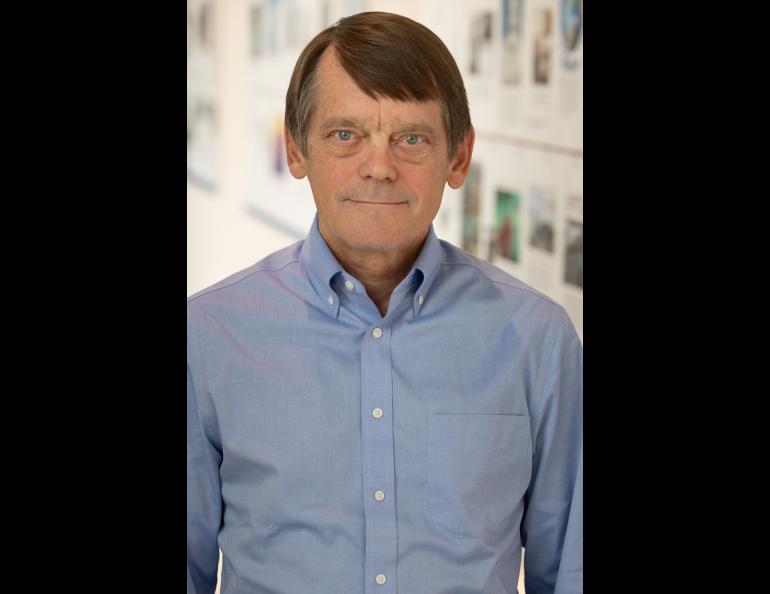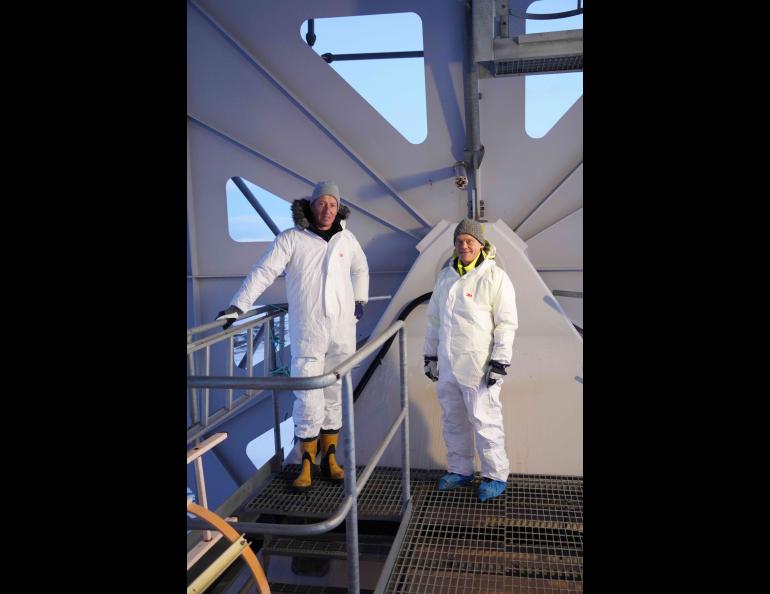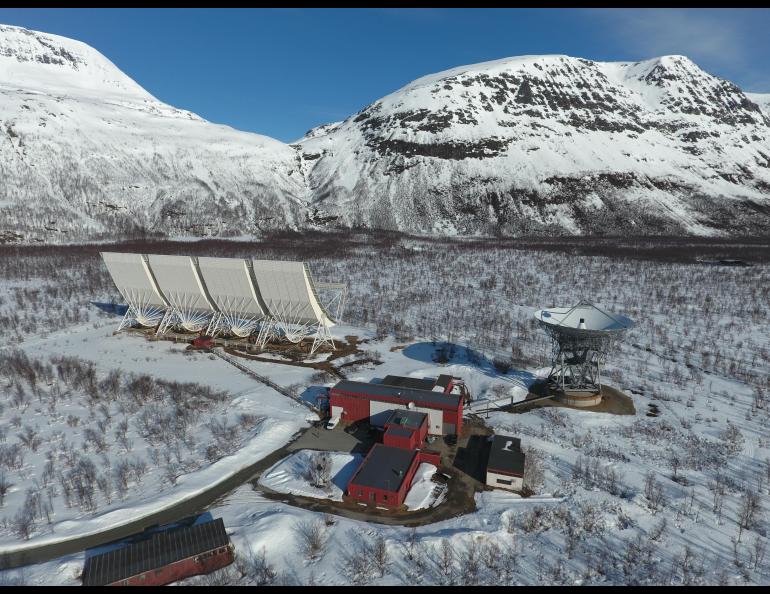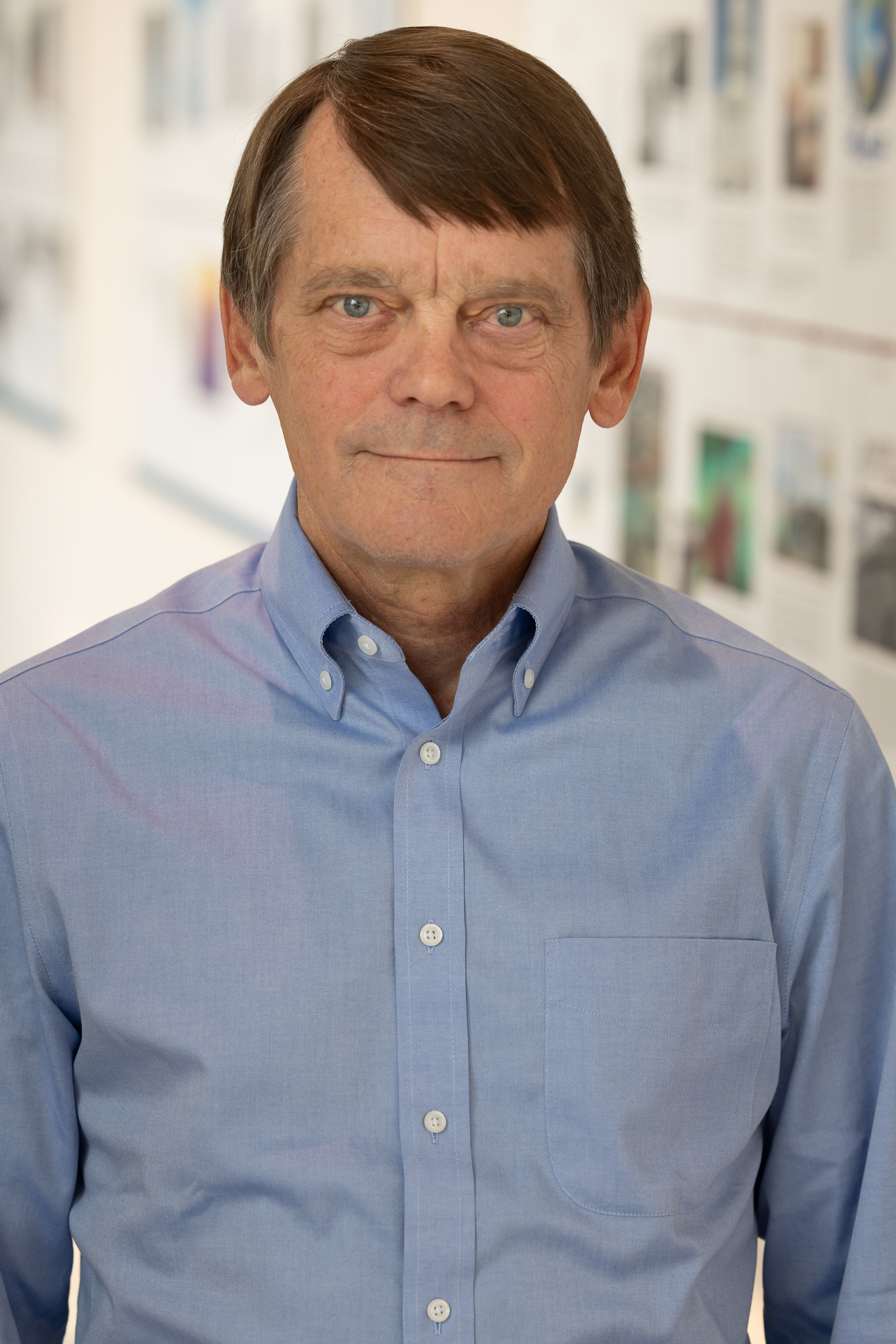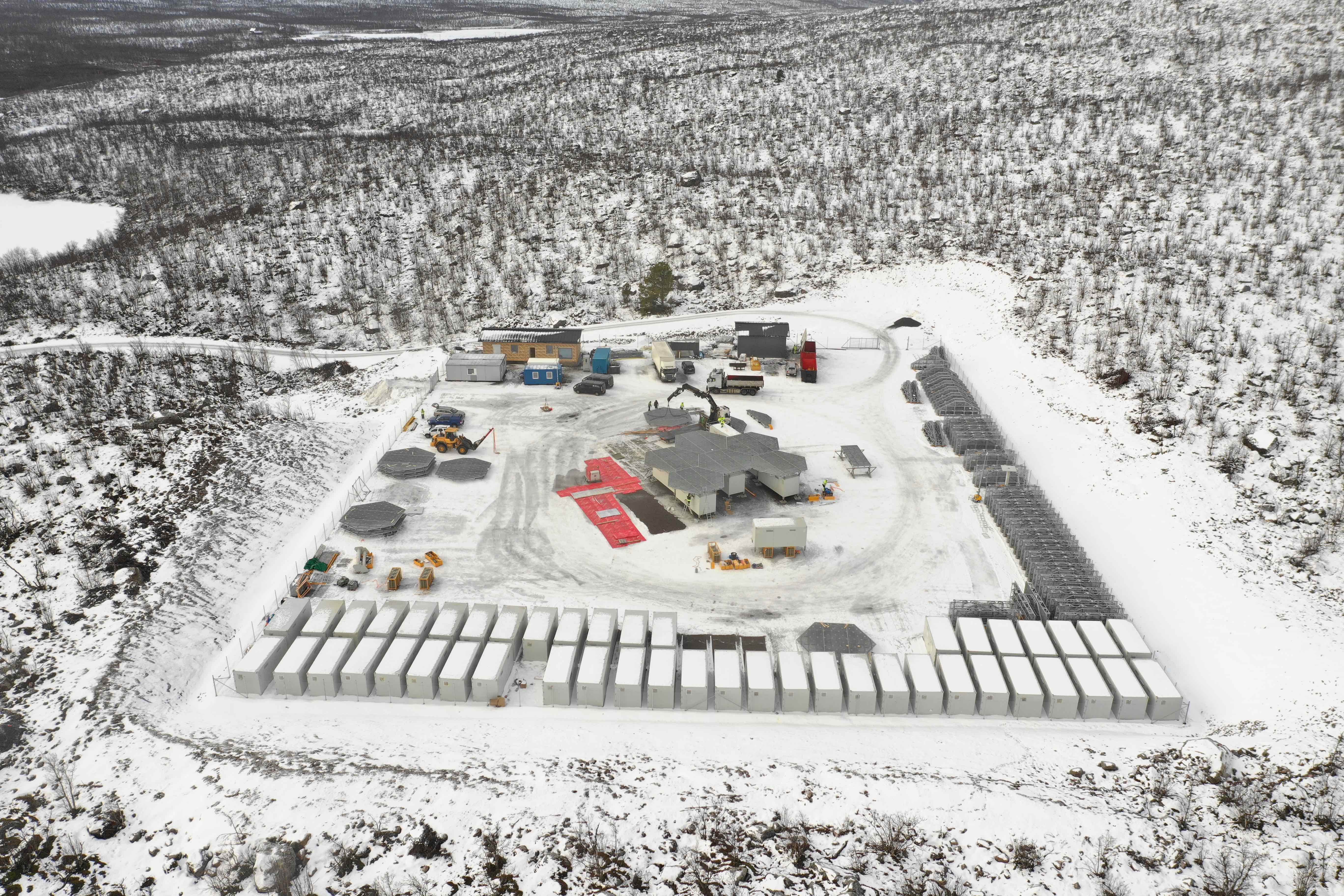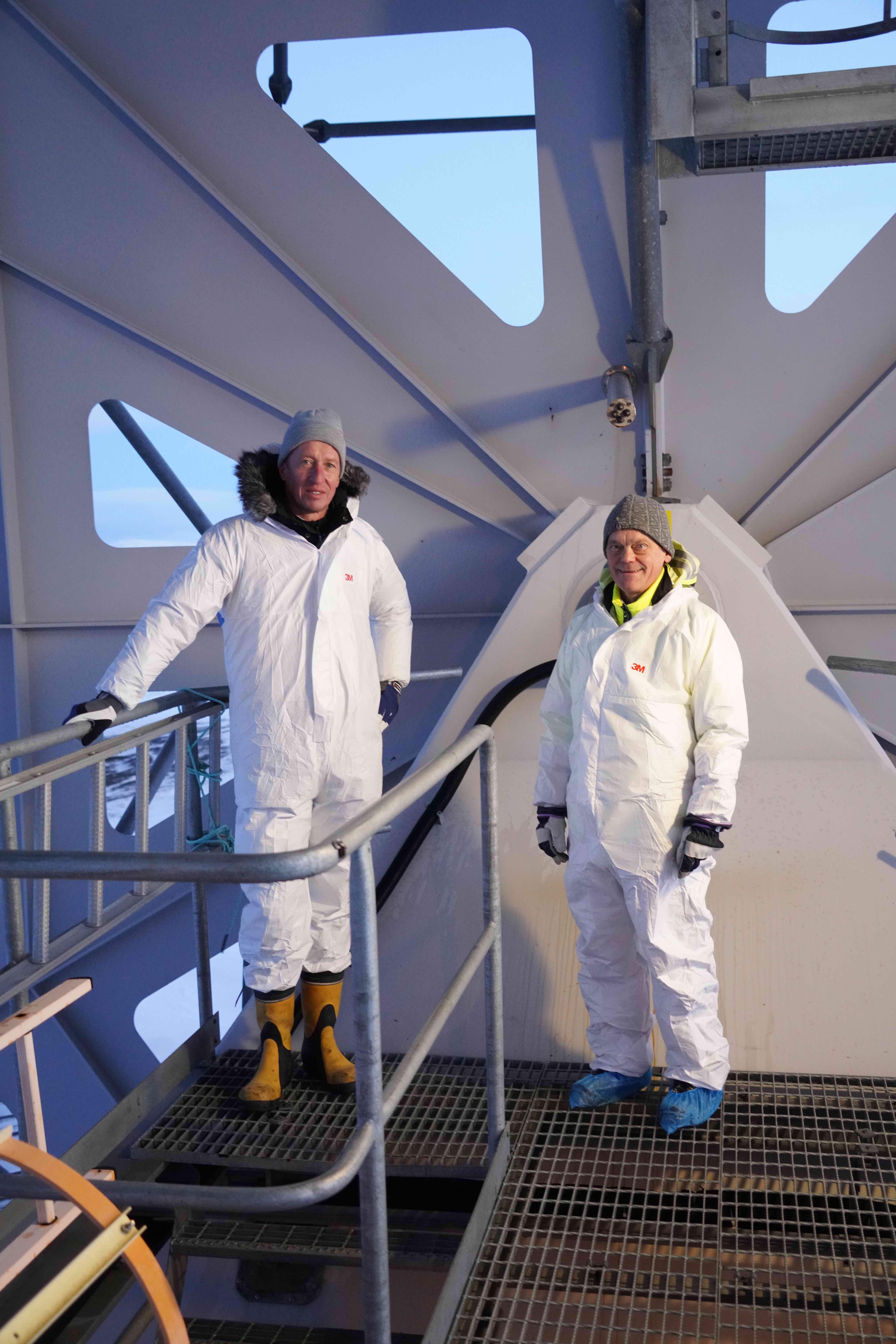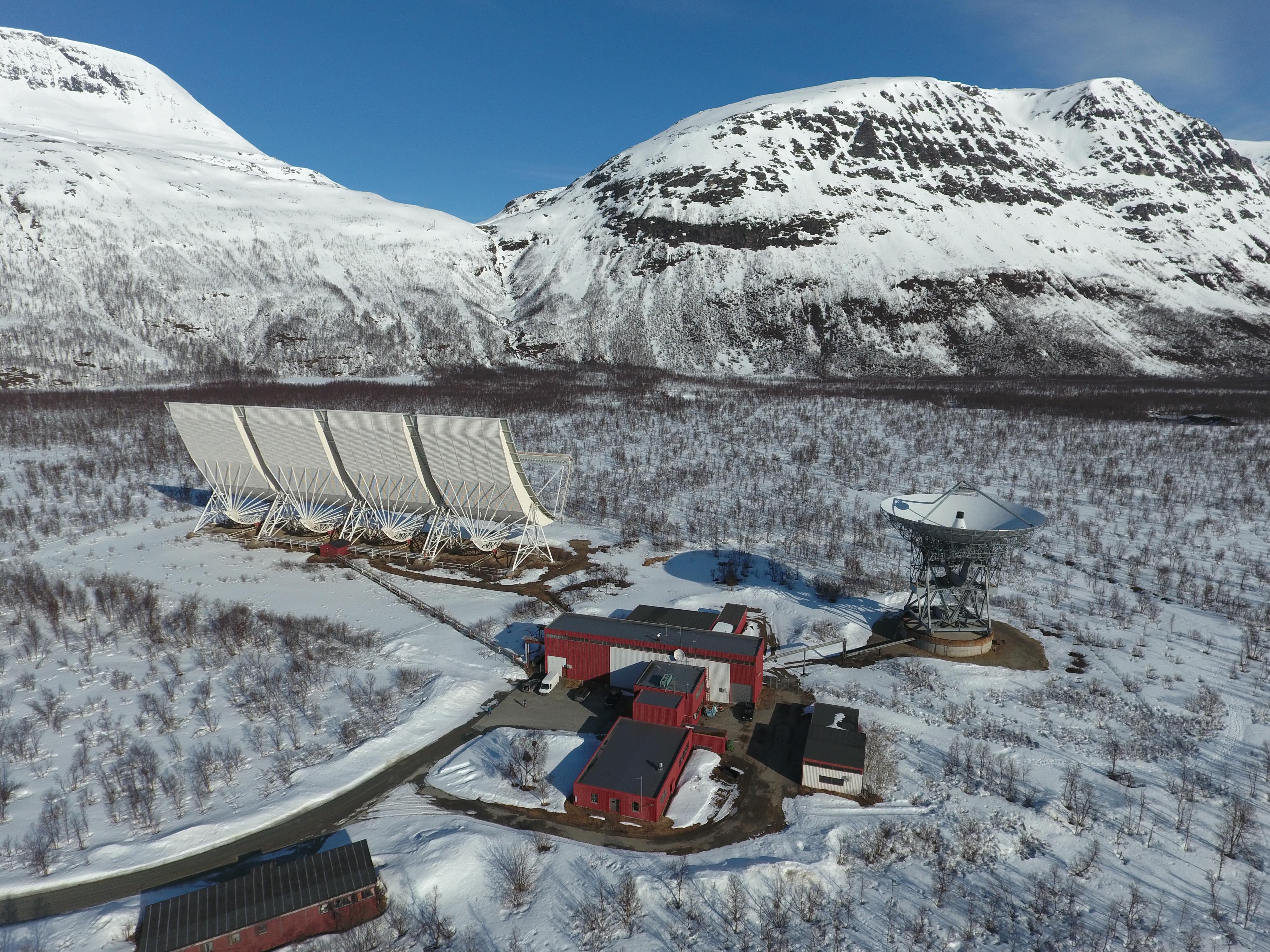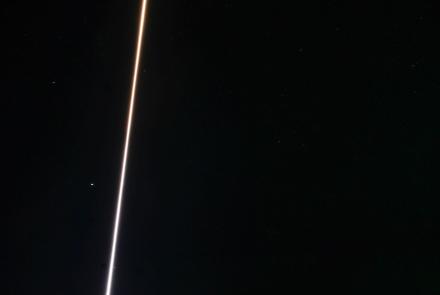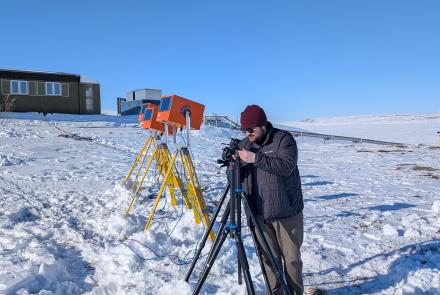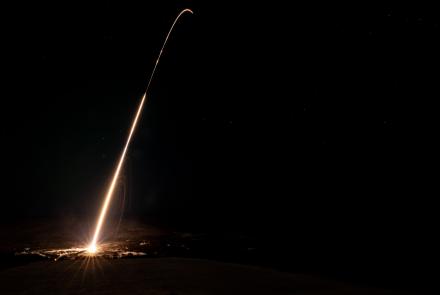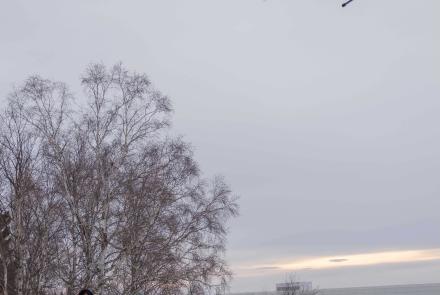Research Professor Craig Heinselman of the University of Alaska Fairbanks Geophysical Institute has been named the recipient of the 10th Beynon Medal for his work leading a six-nation organization that builds and operates ionospheric research facilities in northern Fenno-Scandinavia.
Heinselman led the European Incoherent Scatter Scientific Association from 2012-2022 and joined the Geophysical Institute in April 2023. His expertise is in aeronomy, focusing on the ionosphere’s physical and chemical processes.
The Beynon Medal, named after the late Welsh physicist Sir William John Granville Beynon, is awarded by the EISCAT Council. The council includes representatives of China, Finland, Japan, Norway, Sweden and the United Kingdom.
The Beynon award has only been given 10 times in its 22-year history.
The EISCAT Council recognized Heinselman for his work in advancing EISCAT_3D, an advanced radar system designed to study Earth’s ionosphere, other parts of the upper atmosphere and the near-Earth space environment. It will be the only facility of its kind dedicated to ionospheric research.
The ionosphere is a region of the Earth's upper atmosphere where the thin air is ionized by solar and cosmic radiation as well as the energetic particles that generate auroras.
“Prof. Heinselman’s knowledge and experience from earlier work with different radar stations in the most remote locations was of great value in the development, construction and design of EISCAT_3D,” the award announcement reads.
The award announcement also praises Heinselman’s leadership and sense of humor.
Heinselman was the seventh director of the EISCAT Scientific Association, which formed in 1975.
The association operates several radar systems in northern Fenno-Scandinavia and on the Arctic island of Svalbard. Scientists use them to study atmospheric and space phenomena such as the ionosphere during geomagnetic storms, the formation and dynamics of auroras, and the influence of solar activity on the Earth’s magnetosphere.
“My experiences as director of EISCAT Scientific Association were equal parts challenging and rewarding,” Heinselman said. “We supported a vibrant scientific community and, especially with the EISCAT_3D development, had the opportunity to influence and contribute to future geospace research prospects internationally.
“Receiving the Beynon Medal is a great, unexpected honor,” he said. “I’m really humbled to be listed with the nine earlier recipients of this award.”
EISCAT_3D, when complete, will use a network of antennas at three sites — one each in Finland, Norway and Sweden — to provide high-resolution, three-dimensional images of the ionosphere. It will support a wide range of research in fields such as space weather, atmospheric science and geophysics.
Understanding space weather processes has become increasingly important to operators of satellites, communications and navigation systems, and power grids, all of which can be damaged or disrupted by space weather.
EISCAT_3D has an estimated construction cost of $65 million to $70 million. Antenna arrays at the three sites are complete, and most infrastructure is finished, but electronics systems are not yet operational.
The Scientific Association chose Heinselman as director to lead EISCAT_3D because of his work co-leading a nearly $40 million National Science Foundation project to build the Advanced Modular Incoherent Scatter Radar, or AMISR, systems.
One AMISR radar is at the Geophysical Institute’s Poker Flat Research Range northeast of Fairbanks.Two are in Canada’s Resolute Bay, with one of those operated by the National Science Foundation and the other by the University of Calgary.
The system was designed and built by California-based SRI International, an independent nonprofit research institute where Heinselman was principal scientist. His time at SRI actually brought him to Alaska in 1982 for the final months of operation of a radar at Chatanika.
The AMISR system, completed in 2006, improved on earlier systems by allowing radar beams to be rapidly steered and coordinated in response to upper atmosphere conditions that can change in seconds. That ability greatly increased scientific capability.
Each of the three AMISR radars gathers information about the electrodynamics of the ionosphere’s D, E and F regions. The F region in particular is critical for radio communications because it reflects high-frequency radio waves back to Earth, allowing them to travel over the horizon. It also sometimes disrupts signals passing through it.
EISCAT_3D would advance ionospheric research further by providing scientists the ability to collect high-precision measurements over a three-dimensional swath of the ionosphere, showing how the plasma flows in time and space.
“When I took over at EISCAT they were running a European Union-funded study to look at the design of a 3D radar,” Heinselman said. “I helped them finish that and, with help from the council, worked on getting funding from the member nations.”
Emma Unander, the EISCAT Scientific Association’s project administrator and communicator, said Heinselman was involved in several project aspects.
“He provided invaluable input in the choice of the design and contributed to the finalization,” she said. “Craig was also very involved in the technical part of EISCAT_3D and provided important knowledge about phased array radars.”
“He recruited the correct people to be able to build a radar in the forefront of technology, and he made EISCAT a good place to work,” she said. “That meant that EISCAT could keep the staff and their knowledge for the long stretch of the EISCAT_3D project. This is a very important aspect of these long projects.”
Heinselman left the organization at the end of his latest contract rather than compete for a new five-year term.
“I thought that was too big a bite for me at this stage of my career, so I decided either to retire or find something interesting to do,” he said.
Geophysical Institute Director Bob McCoy didn’t wait.
“Bob McCoy approached me and said, ‘Hey, would you like to do something interesting?’”
Heinselman will travel to Sweden in late 2025 to receive the Beynon Medal at an event to coincide with the inauguration of the EISCAT_3D system. Beynon worked closely with Sir Edward Victor Appleton, who with Miles Barnett confirmed the existence of Earth’s ionosphere in 1925, though the term “ionosphere” was not coined until 1926.
